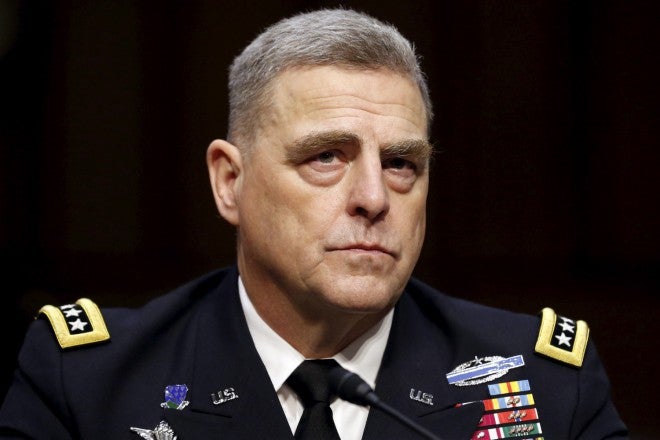US Army Chief of Staff General Mark Milley has released a letter outlining a major reform and restructuring effort for US Army weapons development, testing, and procurement. In the letter, CSA General Milley spoke of the need for a new procurement command structure:
Today, our Army is not institutionally organized to deliver modern, critical capabilities to Soldiers and combat formations quickly. Our current modernization system is an Industrial Age model. It was sufficient for past threats, but insufficient to ensure future overmatch and rapid procurement of the six modernization priorities. Our processes are staff-centric and often stove-piped, which inhibits integration within or across programs. Our requirements process is slow and overly bureaucratic. Our talent management process needs to adapt to ensure the right people develop the right capabilities for future battlefield success.
To implement the necessary changes, our Army will establish unity of command and unity of effort that consolidates the modernization process under one roof. This realignment of responsibilities is not additional force structure, but rather a streamlining of work, which will serve as the custodian of our modernization effort to overcome the bureaucratic inertia and stove-piping found in the Army’s current construct. It will directly incorporate requirements from the warfighter into the acquisitions process and allow us to prototype concepts. It will enable disruption – the messy, chaotic work that is the hallmark of truly innovative organizations. It will employ agile, responsive cross-functional teams for each of the six modernization priorities, which will report regularly to Under Secretary of the Army and the Vice Chief of Staff of the Army to ensure leadership involvement in the early stages of the process. We will reduce the ‘time to deliver’ for the new systems we need to regain our competitive advantage before the next first battle.
Our Army will implement these modernization priorities to improve our acquisition and modernization processes to ensure that future generations of Soldiers continue to be in the most lethal fighting force in the world, for the next seven decades and beyond.
General Milley also commented directly on the future of soldier weapons systems, saying:
6. Finally, Soldier lethality that spans all fundamentals – shooting, moving, communicating, protecting, and sustaining. We will field not only next generation individual and squad weapons, but also improved body armor, sensors, radios, and load-bearing exoskeletons. Putting all this together, we must improve human performance and decision making by increasing training and assessment, starting at the Soldier level. This will require a rapid expansion of our synthetic training environment and deeper distribution of simulations capabilities down to battalion and companies, with simulation capability to model combat in megacities, a likely battlefield of the future.
The announcement raises questions about the future of US Army weapons procurement. Will the new command control all RFIs and RFPs, as well as all contract awards? How will the command be structured, and – if it has one point of authority at the top – how will it avoid institutional bias? How will the command facilitate “bottom up” procurement efforts driven by soldier needs rather than industry interests and the preferences of generals. How will the new structure avoid the pitfalls of the Ordnance Corps of old, especially since it may not have the benefit of the institutional knowledge and infrastructure that was stewarded by that organization?
There is no question that US Army weapons procurement needs reform – and hopefully this effort will provide it. It’s also too early to throw criticism upon the new structure, but these are the questions Milley and others will need to answer in the coming days and weeks.
 Your Privacy Choices
Your Privacy Choices
